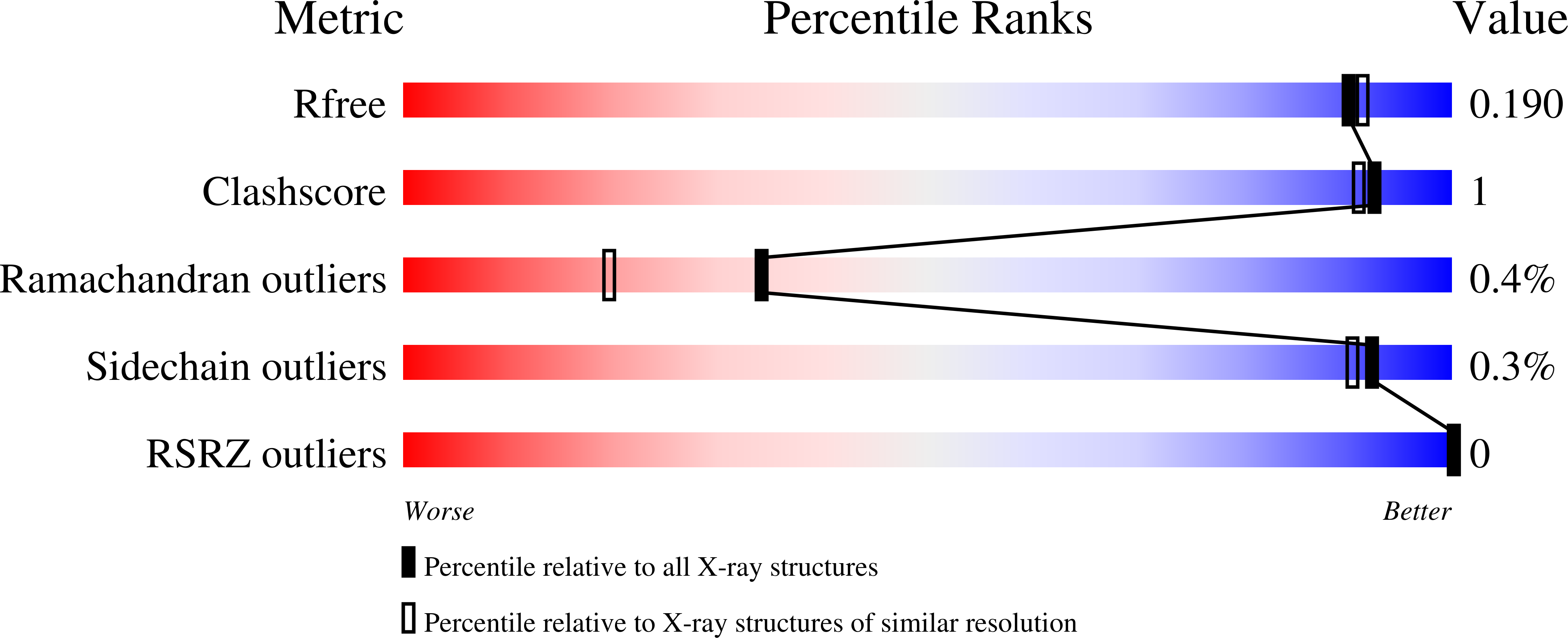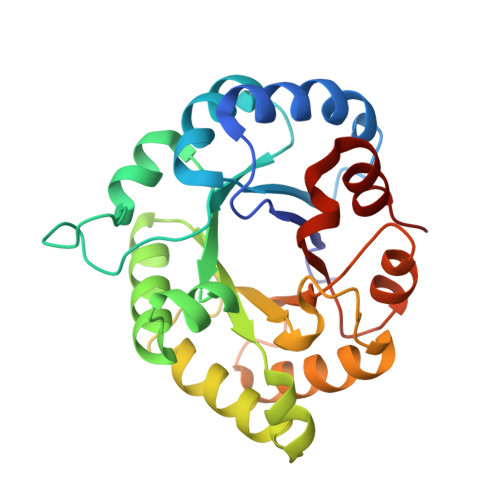Structural Basis for the Limited Response to Oxidative and Thiol-Conjugating Agents by Triosephosphate Isomerase From the Photosynthetic BacteriaSynechocystis.
Castro-Torres, E., Jimenez-Sandoval, P., Fernandez-de Gortari, E., Lopez-Castillo, M., Baruch-Torres, N., Lopez-Hidalgo, M., Peralta-Castro, A., Diaz-Quezada, C., Sotelo-Mundo, R.R., Benitez-Cardoza, C.G., Espinoza-Fonseca, L.M., Ochoa-Leyva, A., Brieba, L.G.(2018) Front Mol Biosci 5: 103-103
- PubMed: 30538993
- DOI: https://doi.org/10.3389/fmolb.2018.00103
- Primary Citation of Related Structures:
6BVE - PubMed Abstract:
In plants, the ancestral cyanobacterial triosephosphate isomerase (TPI) was replaced by a duplicated version of the cytosolic TPI. This isoform acquired a transit peptide for chloroplast localization and functions in the Calvin-Benson cycle. To gain insight into the reasons for this gene replacement in plants, we characterized the TPI from the photosynthetic bacteria Synechocystis (SyTPI). SyTPI presents typical TPI enzyme kinetics profiles and assembles as a homodimer composed of two subunits that arrange in a (β-α) 8 fold. We found that oxidizing agents diamide (DA) and H 2 O 2 , as well as thiol-conjugating agents such as oxidized glutathione (GSSG) and methyl methanethiosulfonate (MMTS), do not inhibit the catalytic activity of SyTPI at concentrations required to inactivate plastidic and cytosolic TPIs from the plant model Arabidopsis thaliana (AtpdTPI and AtcTPI, respectively). The crystal structure of SyTPI revealed that each monomer contains three cysteines, C47, C127, and C176; however only the thiol group of C176 is solvent exposed. While AtcTPI and AtpdTPI are redox-regulated by chemical modifications of their accessible and reactive cysteines, we found that C176 of SyTPI is not sensitive to redox modification in vitro . Our data let us postulate that SyTPI was replaced by a eukaryotic TPI, because the latter contains redox-sensitive cysteines that may be subject to post-translational modifications required for modulating TPI's enzymatic activity.
Organizational Affiliation:
Laboratorio Nacional de Genómica para la Biodiversidad, Centro de Investigación y de Estudios Avanzados del IPN, Guanajuato, Mexico.
















